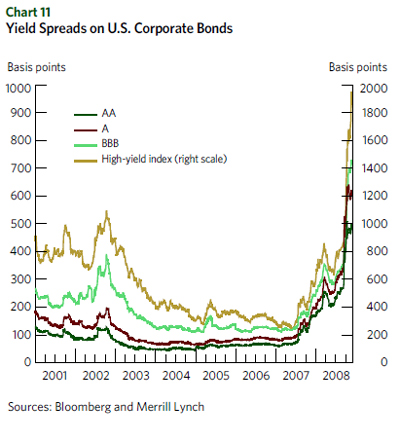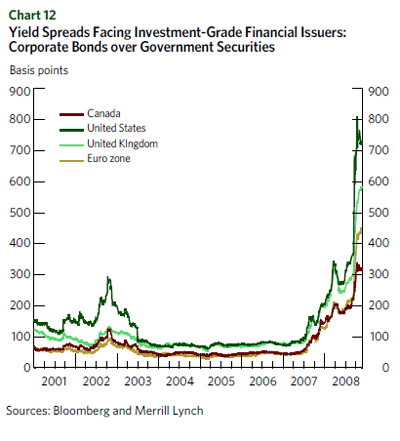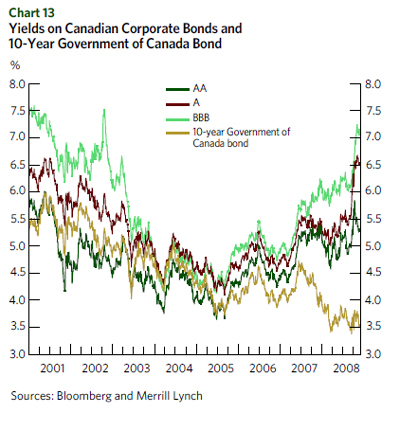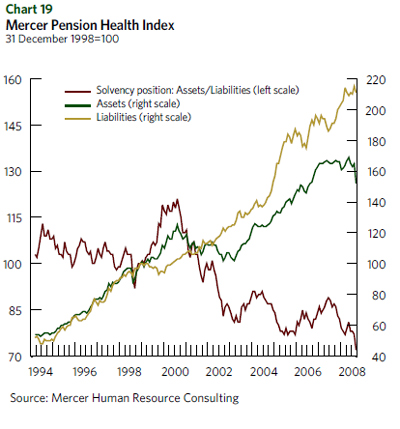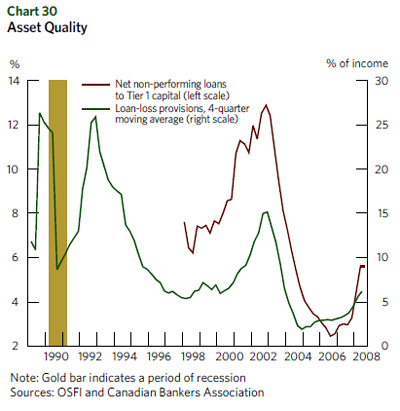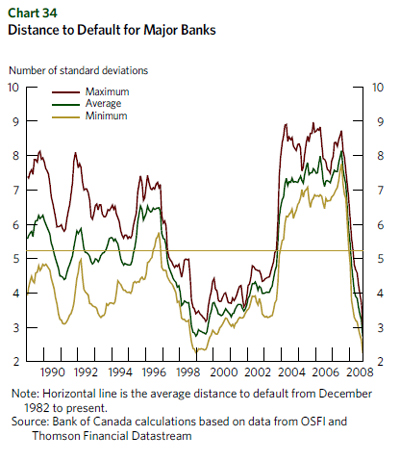DBRS has announced that it:
has today placed the long-term and short-term ratings of George Weston Limited (Weston or the Company) – the Notes & Debentures at BBB, the Preferred Shares at Pfd-3 and the Commercial Paper at R-2 (high) – Under Review with Developing Implications.
The action follows Weston’s announcement today that its subsidiary, Dunedin Holdings S.a.r.l. (Dunedin), has entered into an agreement to sell its U.S. fresh bread and baked goods business to Grupo Bimbo for net proceeds of approximately US$2.5 billion. The completion of the transaction is subject to normal closing conditions, including regulatory approval; if the closing conditions are met, the parties expect the transaction to close in the first quarter of 2009.
Although the transaction represents an opportunity for Weston to realize a significant gain on the sale of this business, which it acquired in 2001, it will fundamentally alter the Company’s profile as the business to be sold represents more than half of Weston’s (ex-Loblaw Companies Limited (Loblaw)) operating income.
Dunedin contributed US$255 million of EBITDA to Weston’s consolidated results for the 52-weeks ended October 4, 2008. On this basis, DBRS estimates Weston’s pro forma (from continuing businesses) EBITDA for the same period to be approximately $175 million – this estimate also adjusts for the December 1, 2008 sale of Neilson Dairy (approximately $50 million of annual EBITDA) to Saputo Inc. for net proceeds of approximately $400 million.
The proposed divestiture of these assets would also have a meaningful impact on Weston’s financial risk profile. DBRS estimates the Company would have total cash and cash equivalents of more than $3.5 billion, after repaying $250 million of notes that come due in February 2009 and satisfying it current intention to redeem approximately $265 million of preferred shares in 2009. This cash and equivalent balance would compare to an estimated gross debt balance of $775 million (after February 2009) and preferred share balance of $835 million.
In its review, DBRS will focus on Weston’s intention with regards to its large cash and cash equivalent balance, its remaining operating business and its investment in Loblaw. DBRS believes that with an appropriate financial profile, Weston has the ability to remain placed in the BBB rating category with its continuing businesses (i.e., gross debt-to-pro forma EBITDA a maximum of 2.5 times).
The ratings for Loblaw (rated BBB and R-2 (middle) with Negative trends) remain unaffected at this point as DBRS believes the proposed transaction, in and of itself, does not impact the credit risk profile of Loblaw.
We’ll see what happens! Presumably the credit would be adversely affected if they use the excess cash to privatize Loblaws:
Speculation has swirled over what the company could do with its bulked up bank account.
Galen Weston said the company could look towards opportunities in either the United States or Canada, and the possibility of expanding its frozen bakery business.
There have also been suggestions that Weston is planning to buy out minority shareholders of Loblaw Cos. (TSX: L.TO), Canada’s largest supermarket operator. That would cost Weston about $3.5 billion at current stock values.
…
Galen Weston briefly addressed the rumours after an analyst question.
“The way we look at our position in the baking and supermarket business is there’s a lot more opportunity to come,” he said, without mentioning specifics.
Outstanding Weston issues are WN.PR.A, WN.PR.B, WN.PR.C, WN.PR.D and WN.PR.E. They were last mentioned on PrefBlog en masse when Loblaws was downgraded. All issues are tracked by HIMIPref™, but are incorporated in the Scraps index due to credit concerns.
Update: S&P is much more emphatic:
Standard & Poor’s Ratings Services today said it placed its ratings, including its ‘BBB’ long-term corporate credit rating, on Toronto-based George Weston Ltd. on CreditWatch with negative implications. This means that we could either lower or affirm the ratings after completion of our review.
“The CreditWatch placement follows the company’s announcement that its subsidiary, Dunedin Holdings SARL, is in discussions with Mexico-based Grupo Bimbo S.A.B. de C.V. about the possible divestment of George Weston’s U.S. fresh bread and baked goods business,” said Standard & Poor’s credit analyst Lori Harris. Although total estimated sales proceeds and their redeployment are currently unknown, there is market speculation about whether the proceeds will be used for the possible privatization of George Weston’s 62%-owned subsidiary Loblaw Companies Ltd. (BBB/Negative/–) or of George Weston itself.
“In Standard & Poor’s opinion, the deployment of potential sales proceeds for privatization or acquisitions, combined with the absence of the EBITDA for the U.S. fresh baked goods business, could lead to higher debt levels and weaker credit protection measures,” Ms. Harris added. With adjusted debt to EBITDA of about 4.4x for the 12 months ended Oct. 4, 2008, George Weston’s credit measures are already weak for the ratings in our view.
While the ratings on George Weston and Loblaw are currently the same, the rating relationship between the two remains one of linkage, not equalization, with each rating jointly influenced by the respective credit profiles. In the event of the sale, Standard & Poor’s would reevaluate the key parent-subsidiary relationship, including the strategic importance and ownership structure, to determine the rating links between George Weston and Loblaw. The ratings could become equalized should the relationship become significantly closer.
Standard & Poor’s will monitor current developments and meet with management to discuss the proposed divestment and use of proceeds. The resolution of the CreditWatch placement depends on the transaction closing and subsequent redeployment of funds, the revised capital structure, and George Weston’s future business and financial strategies.
